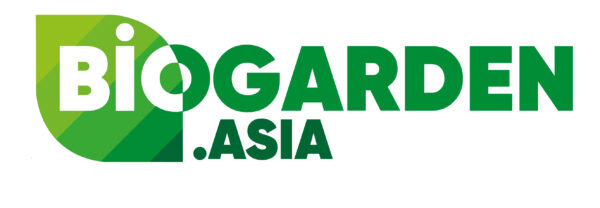No products in the cart.
NEWS
Profit Maximization: Definition and Strategies for Business Success
It’s important for business owners to do everything they can to maximize their profits to increase their company’s chances of long-term survival.
Maximization of profit can enable business leaders to efficiently allocate resources in ways that generate the most profit, helping ensure that companies remain financially stable and experience sustained business growth. If you’re ready to expand your business, employing a profit maximization strategy could allow your company to reinvest in entering new markets and take advantage of additional business opportunities while helping to ensure that you see a boost in net revenue.
What Is Profit Maximization?
Profit maximization entails generating the highest possible profit for your business after costs are subtracted. Maximization of profit, which is a goal for many companies to maintain long-term growth and survival, is typically achieved by increasing revenue and reducing costs.
Economically speaking, this concept is closely tied to the law of diminishing marginal returns. This law states that adding extra production factors – such as hiring more workers or increasing working hours – can eventually yield lower gains in output from each new unit of production. Profit maximization highlights the optimum balance of input and output that makes your business most profitable.
In other words, a company’s profit is maximized when the revenue gained by including an additional production factor (marginal revenue) is equal to or greater than the cost of introducing that additional production factor (marginal cost).
For example, say a clothing factory finds 10 workers is the optimal number to produce a batch of sweaters. Adding more workers to produce the same batch of sweaters could change production dynamics, resulting in a less efficient process, higher labor costs, and ultimately diminished returns. Profit maximization seeks to avoid such scenarios by pinpointing the most effective use of resources
Example of Profit Maximization
Imagine a hardware store owner is toying with the idea of keeping the shop open for an extra hour every day. The critical question for the owner to consider is whether the additional revenue generated by that extra hour exceeds the total expenses incurred.
If so, it’s financially prudent for the shop to remain open for an extra hour. If not, the extra hour is costing the shop owner more – even if the business is still making a gross profit (the direct income from sales minus the costs of goods sold). When determining how to maximize profit, the hardware store owner also needs to consider net profit, which takes into account all other costs, such as utilities and staff wages.
Advantages of Profit Maximization
Profit maximization allows a company to remain fiscally strong, so it can meet its financial obligations, reinvest in growth, and navigate unexpected economic challenges. The benefits of maximizing profits include:
Improved Long-Term Cash Flow
Adopting a profit maximization approach can be a good way to keep your operating cash flow healthy. Operating cash flow is the amount of cash that a business generates from its core operations, minus the cost of running those operations.
A business that ensures the marginal cost never exceeds the marginal revenue is primed to generate positive cash flow. This in turn creates value for shareholders and can potentially attract investors.
Strategic Business Growth
A small business with a healthy profit margin can be in a better position to attract investors and secure loans. This funding allows the company to invest in strategic growth initiatives, from creating new products and services and expanding into new geographic locations, to improving its competitive position and growing its customer base.
For example, a small software development startup might streamline its project management process, finding ways to shorten deadlines and trim costs. This may allow the business to invest in researching and developing an upgraded software product that appeals to a new client base and produces an additional revenue stream.
Lean Business Processes
Profit maximization strategies can motivate companies to adopt lean business processes by implementing efficient practices, reducing unnecessary costs, and making the most of their resources. By cutting out fat and reducing waste at every level, a business can focus its energy on gaining greater control of productivity and boosting its profit margin.
A produce company might lower its inventory levels, for instance, to avoid losing excess products to spoilage. Or a car manufacturer may employ just-in-time manufacturing, sourcing materials from suppliers only when they are needed for production to reduce storage costs and reduce waste. Both instances can maximize profit, so long as neither hinder the company’s ability to meet customer demand and maintain sales.
Disadvantages of Profit Maximization
Profit maximization can come with a variety of potential pitfalls that small businesses should be aware of, including:
Inferior Products
Profit maximization can spell bad news for customers if a company supplies inferior products or uses cheaper, lower-caliber materials solely to make more money. While decreasing production costs can increase gross profit in the short term, your customers are bound to notice any decline in quality, which could ultimately drive them away.
When cutting costs, it’s important to make sure you aren’t reducing the value of your products and services in the process.
Inflated Prices
Similarly, customers may feel they have been handed a raw deal if a company hikes its prices to maximize profits. As a result, customers may choose alternative products and services that offer a better value, leading the company to lose its competitive advantage.
To manage this risk, businesses should carefully consider the potential consequences of price changes by conducting market research to determine if an increase is warranted.
Damaged Brand Reputation
Consumers may perceive companies engaging in profit maximization as being entirely motivated by making money, which can damage brand perception. Consumers are often turned off when they believe a company is cutting corners to the point that its business practices are having negative impacts on its customers and employees.
Today’s consumers seek out companies whose values align with their own, so it’s important to strike a balance between maximizing profits and running a responsible, ethical business with a clear brand purpose that benefits society.
How to Maximize Your Profits
To achieve profit maximization, your business can increase revenue, decrease costs, or both. In fact, businesses often look to strike the right balance between increasing revenue and decreasing costs to achieve their profit maximization goals.
How to Increase Revenue
Businesses can consider a variety of ways to increase their revenue, including:
- Employing effective marketing campaigns. Clever marketing can allow a business to introduce its products to the market and attract new customers.
- Expanding sales. Businesses may decide to enter new markets and seek additional customer segments. Plus, a business can upsell and cross-sell by offering additional items or premium versions of products or services.
- Adjusting prices. A company may need to raise its price to ensure that the company increases its profit on each sale while continuing to remain competitive.
- Spending more on quality. At times a business needs to spend more on improving its products and services to make more. For instance, a family-run ice cream shop might decide to use more expensive, higher-quality ingredients to differentiate itself from its competitors, attracting customers who are willing to pay a premium for a fresher, tastier dessert.
- Investing in customer retention strategies. Companies can create loyalty programs to reward regular customers and encourage repeat business for sustained revenue growth.
- Taking care of employees. If business leaders want to improve productivity, they should prioritize employees’ well-being and seek staff input to ensure that workers are not negatively impacted by process changes and other efforts to maximize profits.
How to Decrease Costs
In an effort to maximize profits, a business can often reduce its costs. Companies can take several steps to lower their expenses, including:
- Reducing overhead. Try to analyze where you can trim unnecessary expenses without sacrificing the quality of your products and services. This requires creating a clear picture of your cost structure and identifying where value is generated and where it’s lost. For example, if shipping delays on certain materials are slowing down production, would it make better financial sense to manufacture some of your own materials, rather than rely on your current suppliers?
- Adopt time-saving technology. Incorporating technology to automate repetitive tasks can improve efficiency, reduce labor costs, and allow staff to focus on higher-level work. While your business may incur an initial up-front cost when adopting advanced technology, your business could save more time and money in the long run.
- Streamline processes. Identifying and eliminating bottlenecks and redundancies can enhance productivity, reduce costs, and allow products to get in the hands of consumers more quickly.
- Outsource certain functions. By relying on contractors to handle certain tasks that are not central to your business, you may save on labor costs, office space, utilities, and equipment expenses.
The Bottom Line
To help ensure that a company continues to thrive, business leaders can often look to maximize their profits, often by increasing their revenue and reducing their costs. By carefully crafting strategies to help achieve the maximization of profits without sacrificing a product’s quality, a business can innovate, grow, and survive over the long haul.
Photo: Getty Images



